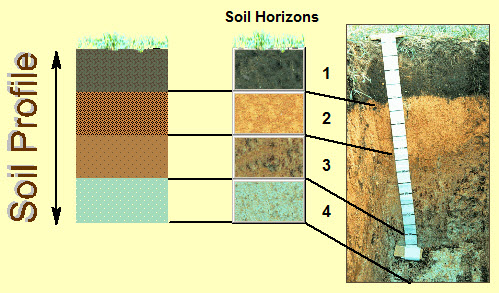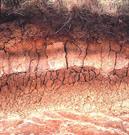How To Recognise Soil Horizons
Soil horizons are layers within the soil profile and are approximately parallel to the ground surface. A soil profile is made up of several horizons and each is distinguished from the horizon above or below by being different in one or more characteristics. These differences include colour, texture, structure, consistence, and coatings. (see Hamilton Ash picture)
Soil horizons are usually given letter codes (horizon notation) to identify the type of horizon. For example, the topsoil is referred to as the A horizon and subsoil horizons are referred to as B horizons. C horizons are those which have been slightly altered by soil forming processes and generally occur deep in the soil. Other horizon notations include R for rock, O for organic material such as leaves or peat, and E for a layer leached of organic matter, iron or clay.
Each of these horizon notations can be made more specific by adding additional codes. E.g. Oh is an organic horizon of strongly decomposed material, Bt is a B horizon containing clay translocated from the horizon above,
Bg is a pale wet horizon with at least 2 % mottles.
Horizon notation and their definitions are in the Soil Description Handbook by Milne et al. (1995) published by Manaaki Whenua Press, Lincoln, Canterbury, New Zealand.

The transition or boundary between horizons in a soil profile can have various appearances. It may for example be sharp or diffuse in appearance, or wavy or irregular in shape.
Transition Between Horizons:
See Also: Introduction to Soils: Horizons and Understanding Soils: Soil Horizons
 |
|
Hamilton Ash
|
|
See Also: Describing Soils Topic: Distinctness